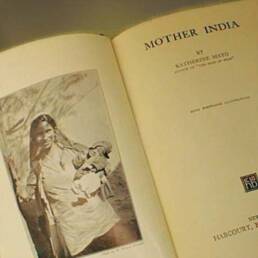On a long sea voyage to India in the spring of 1769, a quiet man was charmed by a pretty young woman – Baroness Imhoff, spouse of a miniature painter. And then love blossomed. The love story, however, also brought a menacing invasive species to India. Bengal Terror.
The gentleman was 37-year-old Warren Hastings, who, in a few years, would become the first Governor of the Bengal Presidency. Only a few years ago, he had lost Mary, his beloved wife. It was his second voyage to India and there he saw Marian. Mrs. Marian Imhoff.
Marian was then only 22. She was a mother of three and an epitome of beauty. Despite coming from an aristocratic family in Germany, her husband, soldier Karl Imhoff, did not have a wealthy life. He wanted to be a miniature painter and East was calling.
They forged a close connection during the calm days on the cruise as Warren Hastings, the recent widow, fell in love with the attractive Marian. K.L. Murray in his book “Beloved Marian”, pleasantly narrated the incredible love story.
Historians say Karl, her husband, didn’t contest the blooming relationship. Six months later, the ship eventually reached Madras. The Imhoff couple started their domestic life there, but within a year Marian found the society unbecoming.
Karl was also not doing so well as a painter. Hastings assisted Karl in moving to Bengal for better prospects. Marian followed her husband a year later. And, as the stars aligned, Hastings was named Governor of Bengal, shortly.
Based on Murray’s account, Marian gradually turned towards the irresistible Warren Hastings, and it is said that the relationship deepened with the silent consent of her husband. The steamy affair began.
Karl eventually departed for Europe. Marian made the difficult decision to leave her first spouse. She may not have truly loved him, but she did care about him, though unsure whether that was motivated by love, ambition, or greed.
After a protracted separation, they eventually filed for divorce, and the lovers were later officially wed following a great deal of controversy in the affluent Calcutta society. The love story, though, had an unimaginable impact on the Indian landscape that no one saw coming.
Marian Hastings was not only a stunning and dignified woman, but she also had a very eclectic sense of elegance. It is said that she once fell in love with a magnificent purple flower that blooms on a perennial free-floating aquatic plant in the Amazon basin of South America.
According to sources, it is believed that Warren Hastings brought this South American aquatic species to the Indian subcontinent to gift his wife around the end of 18th century. It was the water hyacinth or ‘Kochuri Pana’ in Bengali.
However, they were clueless that water hyacinths are among the fastest-growing plants, capable of doubling in size every two weeks. They clog waterways, and supplant native vegetation of entire continents. And it just found a new home.
In India, it is known as the Bengal Terror due to its invasive notoriety. The story of its origin also varies across different places. The invasive species, often known as the “German Terror,” is thought to have been brought to Bangladesh by German submarines at the onset of WW1.
Water hyacinths are currently choking out several water bodies around the nation, posing major ecological hazards. Given that these invasive species quickly reappear makes their removal useless. However, there are numerous initiatives underway to stop the spread.
If you believe the legend attributed to Lady Warren Hastings, it takes us back hundreds of years to a steamy love affair that eventually led to an ecological crisis in the country. As they say, love is often blind.
Sources:
- Murray, K. L, Beloved Marian, Jarrolds Publishers Limited, London, https://indianculture.gov.in/ebooks/beloved-marian
- Pesticides, Volume 14, 1980, Colour Publications
- Nachiketa Das, Save This Land, Notion Press
Image attributes:
- Marian Hastings by William Dickinson, published by Carington Bowles, © National Portrait Gallery, London.
- Warren Hastings with his wife Marian in their garden at Alipore, Johann Zoffany, Public domain from Wikimedia Commons.
- Portrait of Warren Hastings, Kathleen Blechynden, Public domain from Wikimedia Commons.
- Water Hyacinth by Ted Center, Public domain from Wikimedia Commons.




